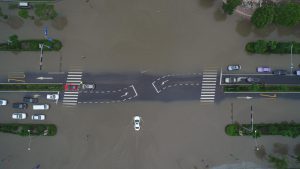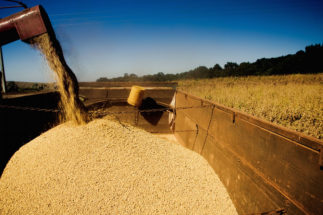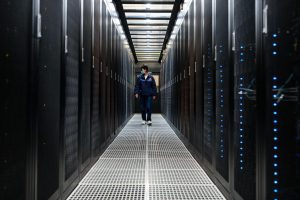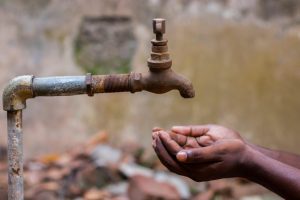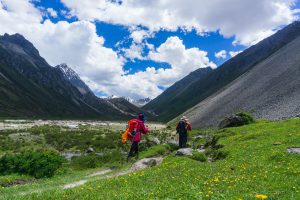Work on one of India’s most contentious hydroelectricity projects restarted in October 2019 after a gap of nearly eight years, till the resumption was brought to a halt by the Covid-19 pandemic. There is every indication that once the Covid-induced national lockdown is lifted, work on the 2,000 MW Subansiri Lower Hydroelectric Project (SLHP) in the Himalayas will restart, ignoring all objections.
The anti-dam movement in the northeast Indian state of Assam is demoralised since much of its leadership is in jail. One of its most important leaders, Akhil Gogoi has been incarcerated for months on charges of alleged links with outlawed Maoist groups and agitating against India’s controversial Citizenship Amendment Act.
Work on the run-of-the-river project – which had been halted by state-wide movements over worries about the downstream effects – was resumed after the National Green Tribunal (NGT) gave a go-ahead in July last year.
“We have already completed 52% of the [remaining] work at the rate of 1-2% every month since last October,” A.N. Mohammed, consultant to NHPC (earlier called National Hydroelectric Power Corporation), told thethirdpole.net. NHPC is the government-owned company executing the project. Mohammed expects the project to be completed by the end of 2023.
Started in 2005, about half of the construction work for SLHP had been completed before agitations brought it to a halt in December 2011. The central government had appointed an experts’ committee that gave the go ahead for the project again, only for the protestors to go to court with the charge that the committee was biased. The work was restarted after the NGT cleared the committee of this charge.
Subansiri is one of the largest tributaries of the Brahmaputra, a transboundary river that originates in Tibet in China and eventually flows into Bangladesh. The SLHP is diverting the waters of the Subansiri through five tunnels, after building a dam at Gerukamukh at the Assam-Arunachal Pradesh border.
Partial change, but worries remain
On resumption, one major recommendation of the experts is being carried out; a move that anti-dam activists see as a partial victory. The base of the dam is being widened from 171 to 271 metres. This will provide a more stable structure in this earthquake-prone region, and is also expected to improve its strength during floods, which are becoming more frequent and more severe as a result of climate change.
But the worries about downstream impacts have not gone away. There have been studies, but activists are still demanding that their scope be expanded to include all socio-economic, cultural and environmental impacts of the projects up to the confluence of the Subansiri with the Brahmaputra around 100 kilometres downstream of the dam. They are also demanding a fresh cost-benefit analysis of the project.
“The project has been designed to absorb floods to the tune of 5,000 cumecs (cubic metres per second) over a 24-hour period,” Mohammed said. But residents downstream of another dam in a Brahmaputra tributary, the Ranganadi, say that dam managers release water without notice, catching millions of people off-guard.
See: Dam worsens flood devastation in Assam
Once the SLHP is built and much of the water in the river moved through tunnels, thousands of farmers and fishers downstream of the dam stand to lose their livelihoods, according to environmental activist Pranjal Gogoi. The biggest problem with run-of-the-river projects is that it takes the water through tunnels for up to ten kilometres, so a long stretch of the river downstream of the dam dries up, till the mouth of the tunnel leads back to the river.
What is the need of an embankment of 30 kilometres? If the dam authorities were sure about the safety of the dam, would they have cared to construct the INR 1.45 billion (USD 19 million) embankment?Pranjal Gogoi, environmental activist
Asked about this, Mohammed referred to NHPC’s 2008 “comprehensive downstream impact assessment study through the Guwahati University in association with Dibrugarh University and IIT Guwahati. The report submitted by the expert group in March 2011 made certain recommendations relating to design and safety of the dam and maintenance of minimum discharge in the river by running at least one unit continuously for sustenance of river ecology and ground water recharge. NHPC has taken up necessary protection measures for 30 km downstream from the dam site.”
Gogoi countered, “What is the need of an embankment of 30 kilometres? If the dam authorities were sure about the safety of the dam, would they have cared to construct the INR 1.45 billion (USD 19 million) embankment?”
![View from Lower Subansiri Hydroelectricity project dam site, March 2020 [Image by: Chandan Kumar Duarah]](https://dialogue.earth/content/uploads/2020/04/Lower-Subansiri-Hydroelectricity-project-dam-site-March-2020-by-Chandan-Kumar-Duarah-1.jpg)
Effect on wildlife too
“Many wetlands will dry up,” Gogoi added. A 2009 study by the International Union for Conservation of Nations (IUCN) found India’s national aquatic animal – the highly-endangered Gangetic Dolphin – living from about 20 kilometres downstream of the dam. IUCN recommended protection of the last 45 kilometre stretch of the Subansiri before its confluence with the Brahmaputra. Mohammed said, “SLHP ensures a reliable minimum flow of 240 cumecs. There will be no problem of (water flow and consequently river level) fluctuations in the 45 km stretch.”
In other Himalayan rivers, notably the Teesta in Sikkim and West Bengal, run-of-the-river hydroelectricity projects have led to major water flow fluctuations, though they had not been foreseen. With power demand in India now lagging well behind power supply, hydro projects can make money only if they sell electricity during peak hours – between 6 and 10 pm. Project managers keep water impounded behind the dams by closing the inlet of the tunnel, and release water to run their turbines only four hours during the day.
See: Where are the Teesta waters
The result is a huge daily fluctuation in water flow and hence the level of water downstream, a fluctuation that few aquatic animals and plants can survive. In the Teesta, the fluctuation has been reported as high as a metre.
Environmentalists fear that the SLHP will also have a major adverse impact on the Tale Valley Wildlife Sanctuary in Arunachal Pradesh. Anwaruddin Choudhury, a respected academic who examined the environmental impact assessment (EIA) report of the SLPHP, found it “too poor on wildlife aspects, with incorrect data, unverified and superfluous statements. It is shocking that mega hydel projects in the north-east are being granted clearances based on such reports. How can we decide the fate of some of the country’s most important wildlife habitats based on sub-standard impact assessment studies?”
There are also concerns that further downstream, the SLHP may impact the globally renowned Kaziranga and Dibru-Saikhowa national parks.
The protests – then and now
K.K. Chatradhara, an environmental activist who has been opposing the SLHP for years, told thethirdpole.net that he was not really worried about the resumption of work because he had been expecting it. “We are ready for that. It gives us lots of new learnings on how to move forward.”
Chatradhara said the movement to oppose the SLHP has had four phases so far. “From 1970 to 2000, people were happy with the idea of the project. They thought it would control floods and erosion, there would be a lot of development in the area, electricity shortages would be a thing of the past, many people would get jobs.”
Between 2001 and 2006, local residents started to realise that very few of them would get any jobs at the project, Chatradhara said. “Organisations started to demand employment for local youth. Instead, free access to the project site was threatened. Bad manners of security guards and project staff angered locals. The project blocked an elephant migration corridor and deposited a huge amount of muck on the riverbed, violating a Supreme Court directive. Local youth started to ask for whom this development was taking place. This led to the demand for a downstream impact study.”
According to Chatradhara, after 2006 locals were divided into four groups. “One group backed the idea of a project that would have no adverse impact downstream; a second group strongly opposed the project in its entirety; a third group took no stand at all; lastly, a few people remained in favour of the project. All this led to suspicion, confusion and then violence, forcing a halt.”
The halt came after two powerful organisations – the All Assam Students’ Union (AASU) and the Krishak Mukti Sangram Samity (KMSS) – joined the protests. By that time, INR 110 billion (USD 1.44 billion) of an estimated project cost of INR 210 billion (USD 2.75 billion) had been spent already.
Chatradhara said that the long hiatus and then the resumption of construction has led to the fourth phase, where locals are getting increasingly angry. According to him, the only way the SLHP could be completed peacefully was by assuring people that there would be no adverse impact downstream, and then keeping that promise.
If that does not happen, Chatradhara forecast renewed opposition that may halt the project again. At the same time, he expected the authorities to react forcefully to any opposition, a forecast supported by the continued detention of Akhil Gogoi on one criminal charge after another. “In all situations, uncertainties are waiting for the people of Subansiri valley.”
![<p>Lower Subansiri Hydroelectricity project, March 2020 [Image by: A.N. Mohammed]</p>](https://dialogue.earth/content/uploads/2020/04/Lower-Subansiri-Hydroelectricity-project-March-2020-by-A.N.-Mohammed-Consultant-NHPC.jpg)

